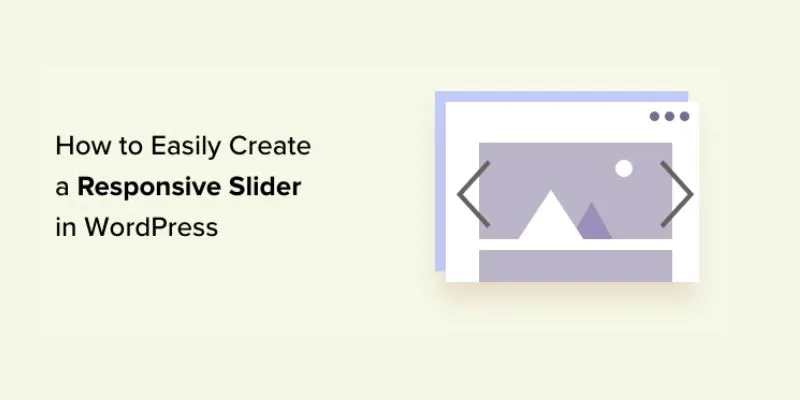How to Create Professional Sliders in WordPress Using SlideDeck
Creating engaging sliders in WordPress can transform your website’s user experience and visual appeal. This guide explores SlideDeck, a powerful tool for building custom sliders effortlessly. Whether you’re showcasing images, videos, or text, SlideDeck offers versatile features and user-friendly controls to help you craft dynamic and professional presentations with ease.
What Is SlideDeck?

With SlideDeck, you can design attractive sliders that adapt to any device, without needing to code. Whether you need to showcase images, videos, blog articles, or specially coded content, SlideDeck has templates and custom settings for you. Portfolios, product highlights, and customer testimonials can all benefit from this kind of presentation.
Why Choose SlideDeck?
Here are some standout features that make SlideDeck a preferred slider plugin:
- Ease of Use: Intuitive drag-and-drop builder.
- Design Flexibility: Multiple deck types and layout options.
- Responsive Design: Sliders look great on all screen sizes.
- Content Sources: Supports integration with social media, videos, and blog posts.
- Custom Styling: Allows advanced customization with CSS for developers.
Installing SlideDeck in WordPress
To get started, follow these steps:
- Login to WordPress Admin Panel.
- Navigate to Plugins > Add New.
- Search for “SlideDeck”.
- Click Install Now and then activate the plugin.
Alternatively, download the plugin from the official SlideDeck website and upload it manually via the “Upload Plugin” option.
Getting Started with SlideDeck
Once installed, a new menu item called SlideDeck will appear on your WordPress dashboard.
Creating Your First SlideDeck
- Click on Create SlideDeck.
- Choose a content source: dynamic (posts, videos, etc.) or custom (manually added slides).
- Pick a template style (Classic, Carousel, Stack, etc.).
- Add slides by dragging content elements or uploading images and text.
- Use the preview option to see how your slider will appear on your site.
Types of SlideDeck Sliders
SlideDeck supports various content types:
1. Image Slider
Ideal for showcasing portfolios or product galleries. Upload high-quality images, add captions, and link them to landing pages.
2. Video Slider
Integrate with platforms like YouTube or Vimeo. Embed video content seamlessly with thumbnail previews and play buttons.
3. Post Slider
Automatically pull content from your WordPress blog posts. Great for highlighting featured articles, tutorials, or the latest news.
4. Custom Content Slider
Manually insert text, images, or HTML to build a fully tailored slider. Suitable for testimonials, service highlights, or promotional banners.
Customizing Your SlideDeck
SlideDeck offers various customization options to match your brand aesthetics:
Layout and Style
- Choose Templates: Select from professionally designed templates tailored to your design goals.
- Transition Effects: Apply animations like fade, slide, or zoom effects for a polished look.
- Slider Dimensions: Customize the width and height to fit your layout perfectly.
- Navigation Controls: Enable navigation options such as dots, arrows, or thumbnail previews.
Typography and Colors
- Adjust fonts, size, and color schemes to align with your brand’s identity.
- Use custom CSS for advanced personalization and control over design.
- Match slider styling with your website’s theme for a seamless appearance.
Embedding SlideDeck in WordPress Pages or Posts
Once your slider is ready, it’s time to publish:
- After saving your SlideDeck, copy the shortcode displayed at the top.
- Paste the shortcode into any WordPress post, page, or widget area.
- Use a Shortcode Block in Gutenberg or paste directly in the classic editor.
You can also integrate SlideDeck into templates using PHP:
<?php echo do_shortcode('[slidedeck id="123"]'); ?>
Optimizing Your Sliders

While sliders can enhance the visual appeal of a site, they should not compromise performance. Follow these optimization tips:
1. Compress Images
Use tools like TinyPNG or ImageOptim to reduce image file sizes without sacrificing quality, ensuring fast loading speeds.
2. Limit Number of Slides
Keep presentations concise, typically 3 to 5 slides, to maintain optimal loading speed and clear messaging.
3. Enable Lazy Loading
Lazy loading ensures images and assets load only when they appear on the screen, reducing initial load times.
4. Use Responsive Settings
Ensure the Auto-Responsive option is enabled so sliders adjust seamlessly across devices.
Common Use Cases for SlideDeck
- Business Websites: Display featured services, client logos, and success stories.
- Blogs and Portfolios: Highlight recent posts or creative work.
- E-commerce Sites: Showcase products with call-to-action buttons for conversions.
SlideDeck Add-Ons and Extensions
SlideDeck offers several premium add-ons for advanced functionality:
- Lead Capture: Add email subscription forms inside slides.
- Parallax Scrolling: Create interactive visual effects.
- Advanced Customization: Unlock extra styles and transition types.
- Analytics Integration: Track user interactions and impressions.
Some features are part of SlideDeck’s Pro version, a paid upgrade.
Conclusion
Mastering SlideDeck allows you to elevate the visual storytelling of your WordPress website without needing advanced coding knowledge. Its simple interface, customization features, and responsive design options make it a valuable tool for bloggers and businesses looking to add dynamic content. By following this guide, you’ll be well-equipped to build, optimize, and publish high-quality sliders that enhance user experience and support your site’s goals.
Related Articles

Best Free Slideshow Plugins for WordPress in 2025

Elevate Your Strategy with the Best Content Marketing Tools of 2025

The 8 Best Content Marketing Tools in 2025 to Elevate Your Strategy

Tips to Password Secure Your WordPress Without User Registration

How to Easily Create a Responsive Slider in WordPress: A Step-by-Step Guide

Step-by-Step Guide to Allow Users to Submit Posts in WordPress

Step-by-Step Guide to Linking Specific Paragraphs in WordPress Posts

Enable PHP in WordPress Posts and Pages Easily

A Step-by-Step Guide to Adding Google Authenticator 2FA to WordPress

7 Best WordPress Help Desk Plugins for Superior Customer Support

The Ultimate Guide: 16 Best Plugins to Improve WordPress Comments (2025)

The Ultimate Guide to the 10 Best WordPress Admin Dashboard Plugins
Popular Articles

Securing Access: The Simple Power of OAuth and 2FA

Convert MTS to FLV Easily with These 8 Desktop Tools

The Ultimate Guide to Website Builders: Wix, Squarespace, Shopify, and Beyond

Convert MOV to VOB Free and Online with These Simple Tools

How to Easily Convert AVI to MOV Using 4 Reliable Tools

5 Best Xbox Converter Apps and Devices for Mac

Six Top-Rated Apps to Sell Your Used Clothing and Household Goods

Step-by-Step Guide to Converting MP4 Videos into PNG Images Online

Top 5 Ways to Automate Google Analytics for Better Efficiency

Dark Web Monitoring Tools: Common Failures and Smarter Solutions

How to Record Your Gameplay on PC Like a Professional: Essential Tools & Tips for 2025

 mww2
mww2